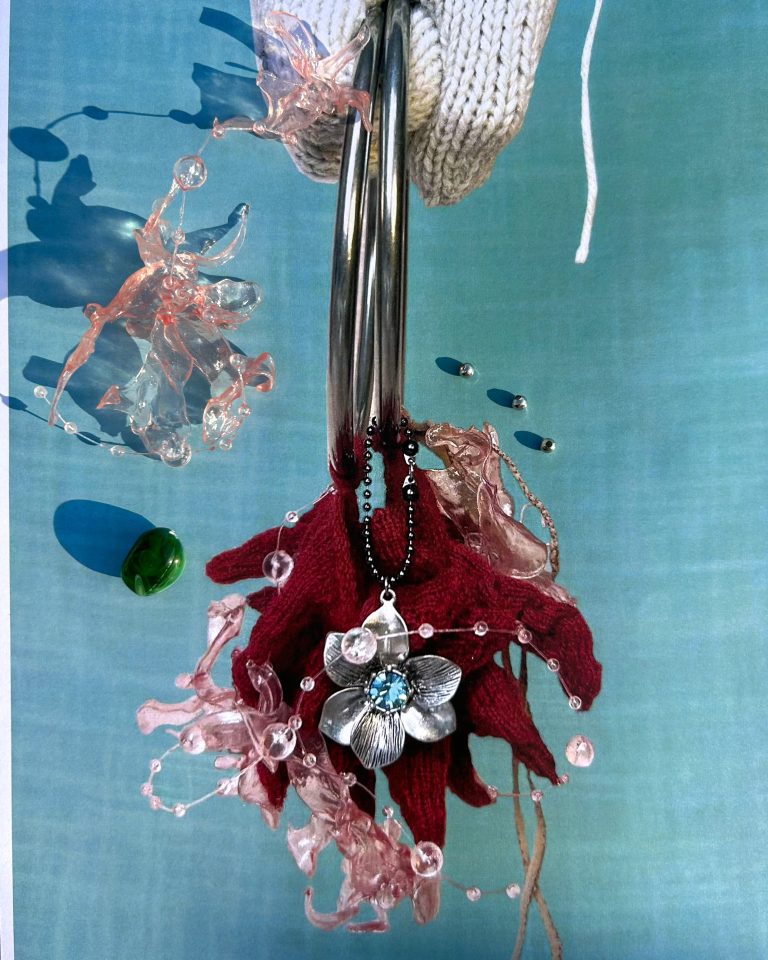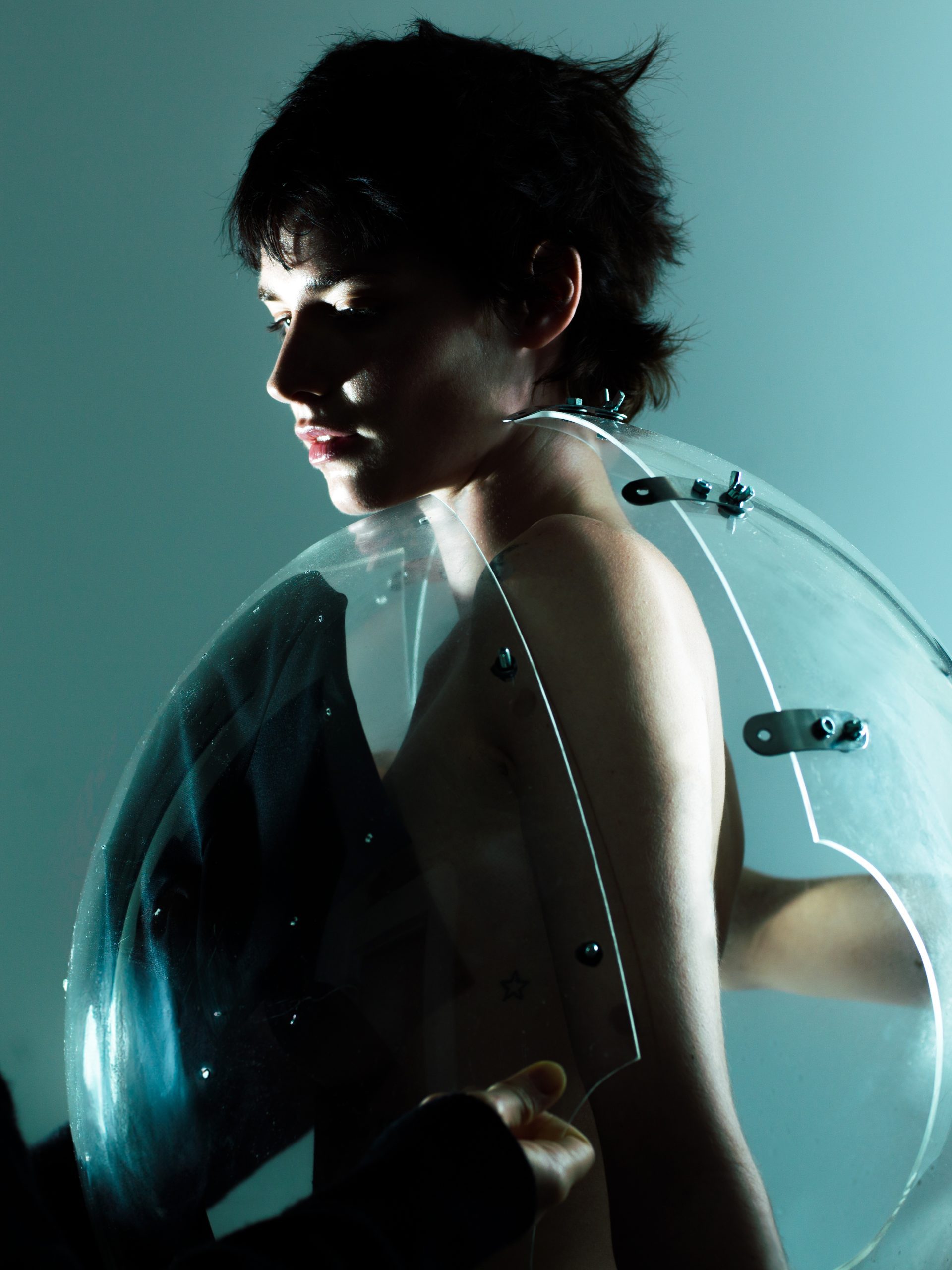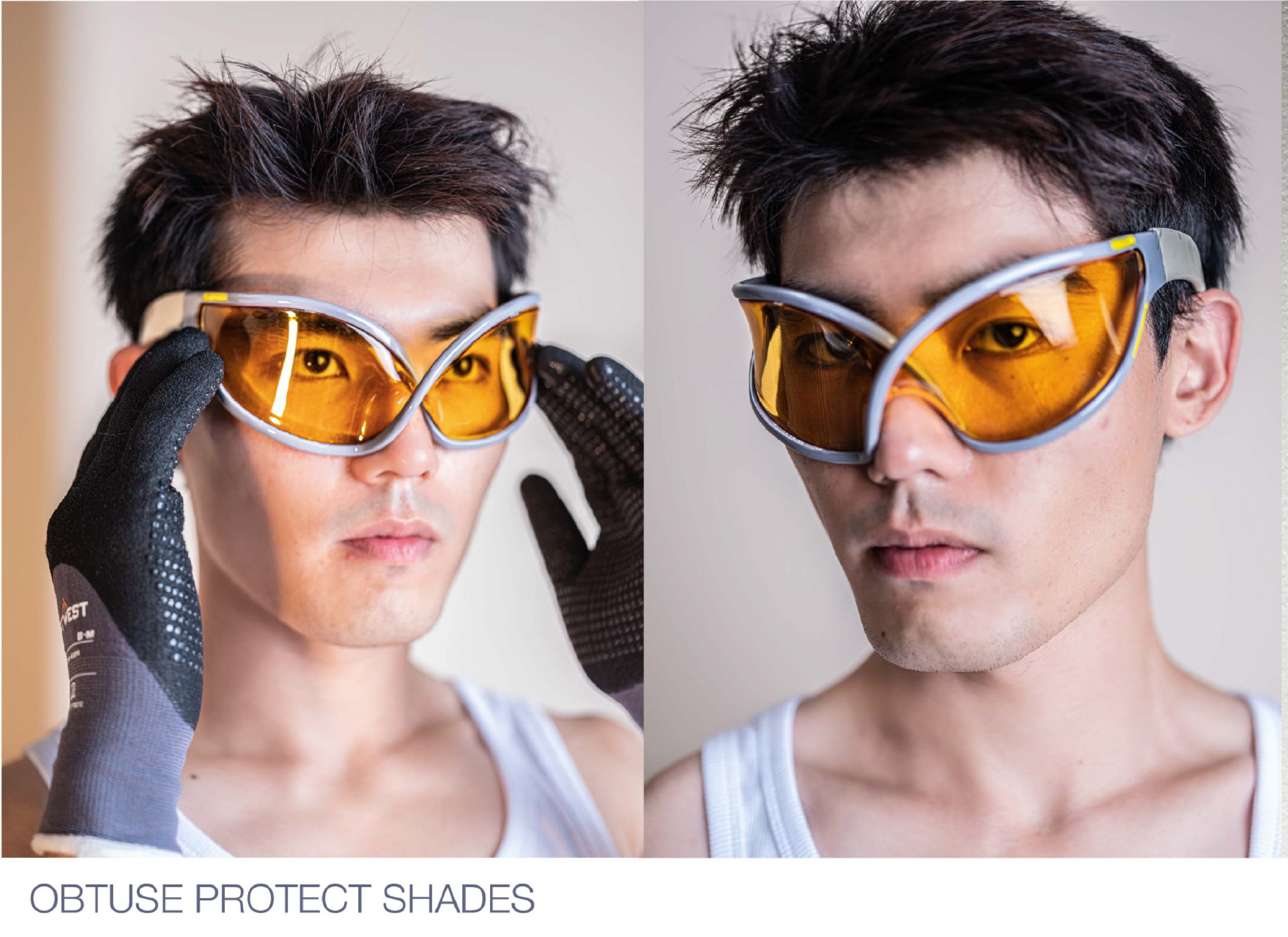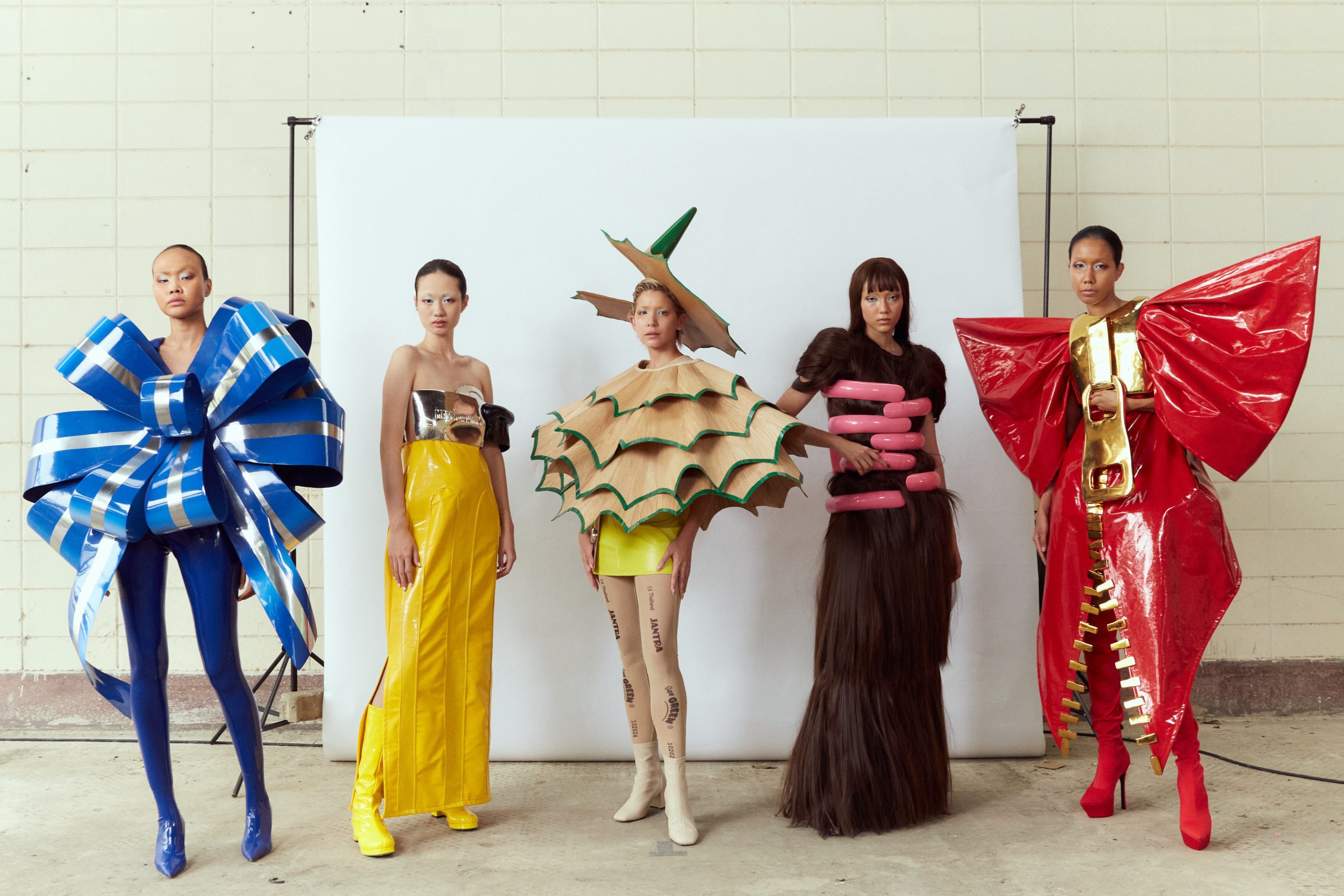GLITCH Magazine is next-gen magazine, aiming to disrupt the traditional fashion hierarchy, and incite change through platforming undiscovered talent. We endeavor to be on the frontline of fashion discovery, connecting and collaborating with international individuals and communities, searching for modern thinkers, change-makers, and those rewriting the fashion script. As part of a new recurring series, each month GLITCH will present creatives who have caught our attention for their progressive action in shaking up the fashion industry. In October, GLITCH were able to connect with a range of designers specializing in a variance of innovative artistry, from sculptors to digital designers, here are this month’s one’s to watch.
BRIT SHAKED
Brit Shaked is a young New York based creative, who has a hunger for collaboration and multidisciplinary creation. Currently working as one of the lead designers at Three As Four, a brand that coins itself the “United Nations of Fashion”, with influences from Lebanon, Israel and U.S.S.R, Brit has always held a steadfast passion for bringing people together. In 2020, miffed that COVID had disrupted her labors of love, and she was unable to showcase her graduate collection, Brit found solace in connecting with various artists via Instagram, who would later assist her in bringing to life her editorial visions. With a flair for experimental creativity, Brit’s work is often non-conventional and acutely personalized; her debut collection was designed from prints that were influenced by the shape of her voice; these sounds were also translated into tailoring and draping techniques. It is in this way that Brit Shaked seems to be pioneering untrodden, tech-led avenues for new and fresh design. Three As Four has acted as a hub and hot pot for this experimental image making Brit is honing, and her collections under the brand name have seen her artistry take form in both tangible and digital realms. As Brit’s career continues, she remains one to watch on GLITCH’s radar, particularly for her parallel work both with physical clothing and with metaverse clothing, as well as her long-term initiative to find tech-informed production solutions and reshape the fashion manufacturing industry.
FREYA DOUGLAS FERGUSON
Freya Douglas Ferguson is a self-taught jewelry artist, who uses her knowledge as a sculptor to inform her statement collections. Ferguson, who works out of her London-based studio. cites biomorphism, the sci-fi imaginary and archeology as themes of inspiration, and her metalwork is iconically fluid in form and concept. Her foray into the world of jewelry design was somewhat incidental, and a side project from her studies as a sculptor, but she soon found that integrating her composition skills into this area of work, and essentially creating small-scale sculptures to accent the human body, offered unrealised enjoyment. Ferguson’s nature-driven design process stems from her emotional relationship with rural England, the locations where she grew up and where her childhood memories are set. The art of creating, whether from reductive or additive methods, is something Ferguson is continuing to explore, and she has begun to take keen interests in any sort of handiwork, from blacksmithing to gemstone setting. GLITCH is excited to see how multidisciplinary artists such as Ferguson are able to reinvent sectors of fashion, particularly through the practice of learning cross-industry skills and techniques.
LES FLEURS
Les Fleurs is a Parisian fashion house rooted in the concept of upcycling. Maria Bernaud has an incessant mission to change the way we consume and wear, and her reinvented fashion line promotes open vision and restoration. Deadstock fabrics and worn clothing is imbued with new aesthetics and new functionalities in her kitschy turned couture collection that centres on lace, crochet and embroidery. Bernaud references her aesthetics as closely connected to romanticism and mythology. Based entirely on eco-conception, the brand’s prime textile source is discarded garments, they then use local handicraft to restructure the pieces, before releasing them in short and finite collections that make them both sustainable and sought after. Bernaud’s tactful art of bringing archival pieces back from a wasteland, and fashioning them with couture coding is something that is not only beautiful, but editing the way we view old and imperfect material.
ssdslsns
Madeline Hing creates unique handmade knitwear designs under the brand ssdslsns. Madeline told GLITCH “I feel my knits are handmade aesthetic, and scrappy. Not super polished or refined. I like hanging threads, holes, and signs of aging. I think it’s nice to see the traces left behind during the making process, sort of like a tactile history.” Madeline is inspired by daily life, especially messy parts of our lives like clumps of hair, dead leaves, and stained papers. “Hair carries memories, and seeing it clustered on a wall is strangely pretty, so I wanted to use its semblance in my garments. The overarching theme of time just creeping by, and aging subconsciously is what I gathered from these subjects” she adds. Sustainability is at the heart of the ssdslsns brand. Madeline sources yarn at local haberdashery when traveling, Colourmart, and sometimes thrifts clothes and flips them. Many of ssdslsns pieces are made to order and she takes into consideration what materials she needs per design, to reduce excess materials. “I try to make it so one piece can be worn multiple ways. Skirt to a top and various layouts for a top and bottoms. That way the functionality of one garment can be fully maximized.” Madeline is currently studying glass arts and is exploring how textiles can be translated into glass. She told GLITCH how “I want to continue with exploring the process and material of knit, while also experimenting if other materials can be incorporated into my work. The distinctions between fashion and art are often discussed, and I can see that the boundaries between the two are blurred by the likes of designers and artists such as Robert Wun, Sigalit Landau, Iris Van herpen, and Rei Kawabuko. The material of glass is the very antithesis of the textiles I’ve been working on so far, a lot of paradoxes exist in it such as soft and hard, tangible and intangible.” Madeline’s next steps center around exploring the craft of glassmaking and seeing if the process and silhouettes can be used in knitwear design. ssdslsns is a wonderful brand that values true craftsmanship, creativity, and sustainability. We love how Madeline’s designs all carry a story and are excited to see her evolution as a designer.
Written by Hebe Street from GLITCH Magazine





